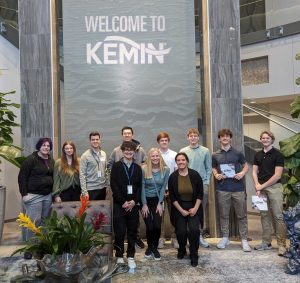Our Medical & Bioscience Research course is hands-on, inquiry-based research within the health and biosciences field, focusing on a laboratory component. Associates in the course are given opportunities to work with business partners on authentic lab projects. Student associates become familiar with equipment and jobs in this field.
We interviewed Audrey Kahlsdorf, a junior at Waukee High School, from the spring semester team.
What have you learned from being enrolled in the Medical and Bioscience course?
Audrey shares, “I’ve learned how to interact with business professionals and peers who have the same goals as I do. Especially in groups, I’ve learned how to mediate some situations in a way I’ve never had to before.” Student associates in this course are met with lots of lab work, which comes with teamwork due to the nature of the course. This helps student associates to grow in their professional and communication skills inside of a lab. Audrey states, “I learned a lot about the concepts of science, the application of it, and also the abundance of opportunities out there for aspiring scientists.” For many, this course allows future scientists to see if this is something they really want to continue, as well as get familiar with the equipment and scientifical knowledge. “This helps to dip your toes into the water instead of getting thrown into the deep end.” Audrey says, “It has helped me to figure out what being a scientist actually entails.”
What was your favorite part of the course?
“Definitely all of the labs we did,” said Audrey. “It was really interesting to be able to work with lab equipment that is actually used in hospital labs.” It is the goal of the Waukee Community School District to equip our graduates with the right knowledge and understanding of the career they may want to pursue in the future.
One of the labs all student associates in this course got to do was the ALU lab, sponsored by Iowa State University. The lab used mini PCR to isolate DNA and then copy it so that the DNA is visible to the human eye. The team used gel electrophoresis to stain it. Then, student associates could see if their own DNA was heterozygous or homozygous. The lab helped to get the team familiar with the different processes involved in working with DNA. It was also an example of how these kinds of machines can work in healthcare with diagnosing patients. “I’ve learned that these processes/equipment are a lot more accessible now than they used to be in the past. Progress in science is constantly evolving, and more accessibility will help science & help us all,” Audrey shares.
Audrey says she plans on pursuing a degree in biology and then move into a specialty specifically around occupational careers. “I’ve decided that going more general in science and then finding a specialty later is right for me. This course was really beneficial to me and my decision.”

